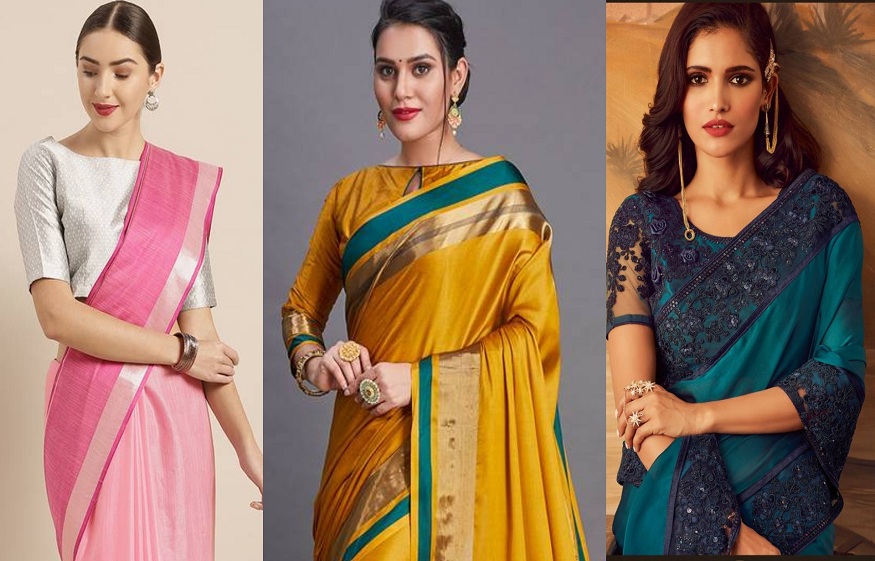Pongal, celebrated primarily in Tamil Nadu, is more than just a harvest festival; it is a grand expression of gratitude to nature for its bounty. The four-day festival, rooted in agrarian traditions, honours the Sun God, cattle, and earth. Dressing in traditional attire is an integral part of the festivities, with the saree taking center stage for women.
Tamil women often wear silk sarees with auspicious colours like gold, yellow, or white, draped in styles that vary from region to region. The practice of wearing sarees during Pongal is steeped in Tamil culture, with references to sarees and their elegant draping found in Sangam-era poetry.
As the festival approaches, choosing the right saree for Pongal becomes an art that balances tradition, comfort, and style. Here’s how you can select the perfect saree to embrace the festive spirit while honouring the rich heritage of this cherished celebration.
The Importance of Fabric in a Pongal Saree
The fabric of the saree you choose for your Pongal plays a crucial role in both comfort and style. The festival typically falls during the cooler months of January, so a saree that balances warmth with breathability is essential.
- Kanchipuram Silk: Known for its opulence and durability, Kanchipuram silk is a classic choice for Pongal. With its rich texture and beautiful motifs such as peacocks, lotuses, and temple borders, this fabric is ideal for those looking to embody the festival’s grandeur.
- Chettinad Cotton: For a more relaxed yet equally traditional choice, Chettinad cotton sarees offer a lightweight alternative. Their bold checkered patterns and earthy tones are perfect for a daytime celebration, providing comfort during rituals or meals.
- Tussar Silk: For those who desire a touch of elegance without the heaviness of pure silk, Tussar Silk offers a sophisticated yet breathable option. The natural texture of Tussar adds a unique charm to any Pongal saree.
These fabrics reflect the richness of the festival while offering practicality for long hours of celebration.
Fabrics that Work for Pongal Weather
The timing of Pongal—January—usually brings moderate weather in most parts of India. While silk sarees remain a classic favourite for festive occasions, lightweight silks or silk-cotton blends are excellent choices if you want elegance without the heaviness. These blends allow for easier movement, especially during long rituals or while serving festive delicacies.
For a more casual and breathable option, consider handloom cotton sarees. Their simplicity, paired with intricate motifs, makes them perfect for a daytime Pongal vibe. Fabrics like Kota Silk or Jamdani are also practical for regions where the weather leans toward warmth, even in January.
Colours that Reflect the Spirit of Pongal
Colour plays a significant role in the selection of a Pongal saree, as it ties the attire to the festival’s themes of harvest, prosperity, and reverence.
- Gold and Yellow: These colours are considered highly auspicious and are perfect for the early morning rituals of Pongal, symbolizing abundance and energy.
- White with Gold Borders: A traditional favourite, white sarees with golden Zari borders evoke purity and elegance, making them ideal for the sacred ceremonies of the festival.
- Earthy Greens and Reds: Colours such as green represent agriculture and growth, while reds signify celebration and vitality, making them fitting choices for afternoon or evening celebrations.
- Vibrant Blues and Pinks: These colours, often paired with gold, bring an added level of festivity and are suitable for family gatherings and the festive evening meal.
When selecting a Pongal saree, these colour choices should align with the rituals and the specific day of the celebration.
Traditional Motifs for a Pongal Saree
The motifs on asaree are more than mere decoration—they carry meaning and tradition. The designs often reflect nature, agriculture, and spirituality, all central themes of the festival.
- Mangoes and Lotuses: Common in Tamil sarees, these motifs symbolize prosperity, fertility, and divine blessings, making them ideal for a festive occasion like Pongal.
- Cattle and Harvest Symbols: Since Pongal honours cattle and the harvest, motifs featuring cows, bulls, or fields of crops are fitting symbols to incorporate into your saree design.
- Sun Motifs: Representing the Sun God, central to the Pongal rituals, sarees featuring sun motifs or rays emphasize the festival’s spiritual significance.
These motifs are more than decorative elements—they connect the wearer to the essence of Pongal, reinforcing the celebration’s connection to nature and the divine.
The Classic Drape for Pongal Sarees
The way a saree is draped for Pongal can vary, but the traditional Nivi drape remains a popular and elegant choice. This classic style allows the saree to flow gracefully and emphasizes the intricate pallu, often featuring rich motifs or Zari work.
For those who prefer a more traditional look, the Madisar drape—a nine-yard saree—remains a symbol of Tamil heritage, especially among Tamil Brahmin women. This style is practical, offering a more secure fit for the lengthy rituals and activities associated with Pongal.
Regardless of the drape, ensure that the pleats are neatly tucked, and the pallu is gracefully arranged. Proper draping ensures ease of movement and comfort throughout the day, especially when partaking in the various rituals and festivities of the festival.
Honouring Tradition with Every Detail
In the end, the most important element when choosing a Pongal saree is its ability to honour the spirit of the festival. Whether through rich silk, earthy cotton, or intricate traditional motifs, the saree should reflect the values of the harvest season—gratitude, abundance, and connection to nature. By selecting the right fabric, colour, and motifs, your saree will not only be a beautiful garment but also a tribute to the cultural significance of Pongal. This festive season, wear your saree with pride, embracing the tradition and joy that this cherished celebration brings.

